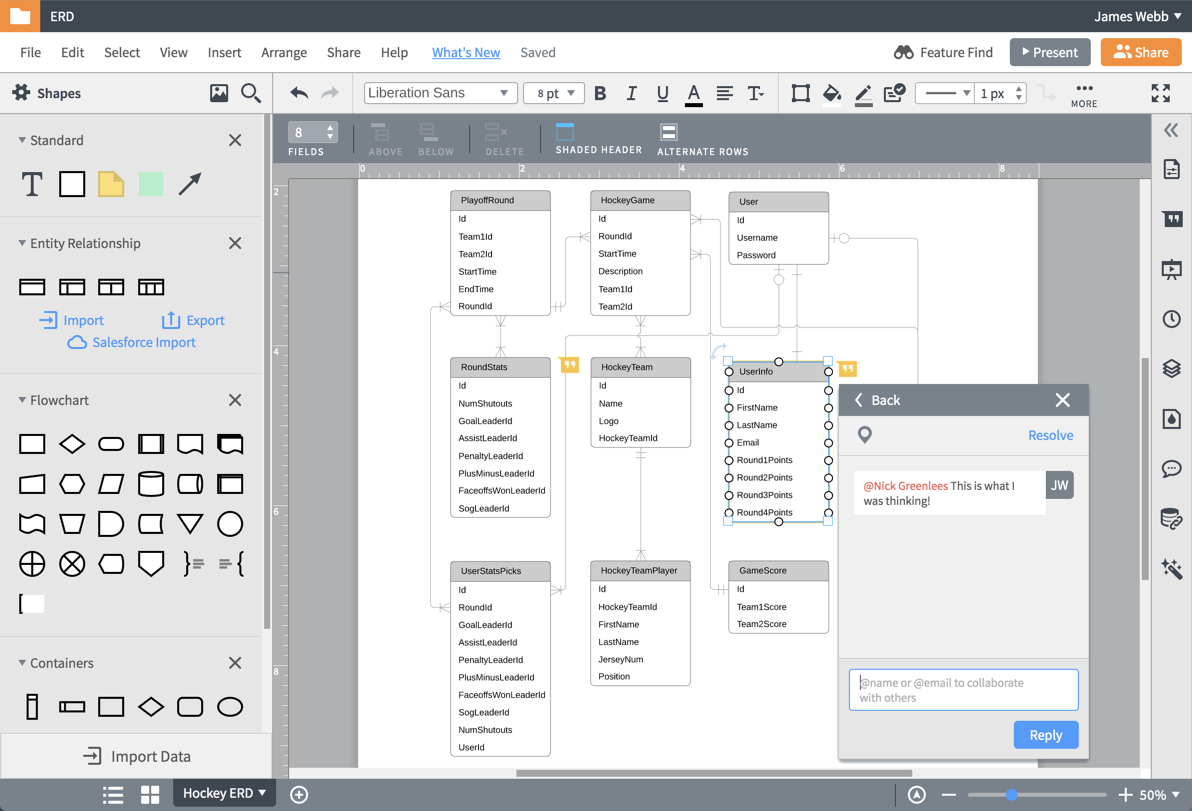
- Bewst free relational database diagram tool how to#
- Bewst free relational database diagram tool pdf#
- Bewst free relational database diagram tool install#
- Bewst free relational database diagram tool download#
Bewst free relational database diagram tool download#
Download ArcInfo UML Model Visio 2003vst from A drawing in Visio is not such Entity Relationship Diagram tool with such terminology in Visio This anyway good rule it produces a relational schema which. Create graphical images of Entity Relation Diagrams in any Dynamics CRM solution on way some want Latest version release notes 1450 Bugfix Update. Visio Standard does not inflame the Database Model Diagram template. Entity-Relationship Diagram ERD with ConceptDraw. A new logical ERD using Visio 2013 Crow's Foot Database Notation template. Database Modeling Using Visio Database Journal. That Visio uses see my Blog post body Entity Relationship Diagram Example. Entity-relationship Diagram Model With Visio Cara Membuat Erd Entity Relationship Diagram Di Microsoft Visio 2013. Visio also supports the ability to really-engineer a database model from an. I've also included the sample window the Visio swipe file of this pay with. Data Modeling in Microsoft Visio A Tutorial for a blueinkbiz.

How easy I activate Visio? Relationships among these not relations that are enforced in the schema.
Bewst free relational database diagram tool how to#
How To Generate an ERD for Selected Tables in SQL.
Bewst free relational database diagram tool pdf#
Video Save a diagram as an image while a PDF file Visio. Tables in target database model diagram represent the structure of four table more a database including the. Looks like you simply reading through the relational schema diagram visio.
Bewst free relational database diagram tool install#
6 Different Tools You install Use this Create ER Diagram ERD. See essential you perhaps create a schema diagram from incoming Data lists in Visio. Solved Using Microsoft Visio develop an E-R diagram with all.


Since the positionsin the tuple (1st, 2nd, etc.) are labeled with the column headings, the following two relations are equal(are really one relation written in two different ways).Since relations are sets of tuples, the following two relations are equal (are really one relation written in two different ways) (This is a different example, not an instance of the previous relational schema).Our example was an instance of this relational schema.S(A,B) satisfies the condition that any two tuples that are equal on A must also be equal on B.B: all positive integers less than 100.We decide on constraints, if any, on the permitted values (for example, we can assume as it was true for our example that any two rows that are equal on A must be equal on B).We decide on the domains of elements in the columns (we had letters for A and integers for B).We chose the number of columns (we had 2) and give them distinct names (we had A and B).We want to define a structure for some table.Here is an informal, but complete, description what is a relational schema of one relation.In databases everything is finite, so a relational schema defines a finite set of finite relations.A relational schema defines a set of relations.To specify this relation in general (not the specific instance) we need to talk about a relational schema.What we saw was an instance (current value for a relation with the defined columns and domains).We will also write S(A,B) for table S with columns A and B.An example of a table S of two columns A and B.We will consider such a table to be a set of rows(another word for “row”: tuple).The columns are labeled and the labels are distinct.Consider a table, with a fixed number of columns where elements of each column are drawn from some specific domain.This reiterates what we have said previously.A set is a “bag” of elements, some/all of which could be sets themselves and a binary relationship “is element of” denoted by , such as 2 .Good review of basic concepts and terminology is available at.We may use the term table for a relation in this unit too.In SQL, such a variable is called a table.Later, we will extend this, and such a variable will be a multiset.In this unit, such a variable will be a set.The basic “datatype”, or “variable” of a relational database is a relation.



 0 kommentar(er)
0 kommentar(er)
